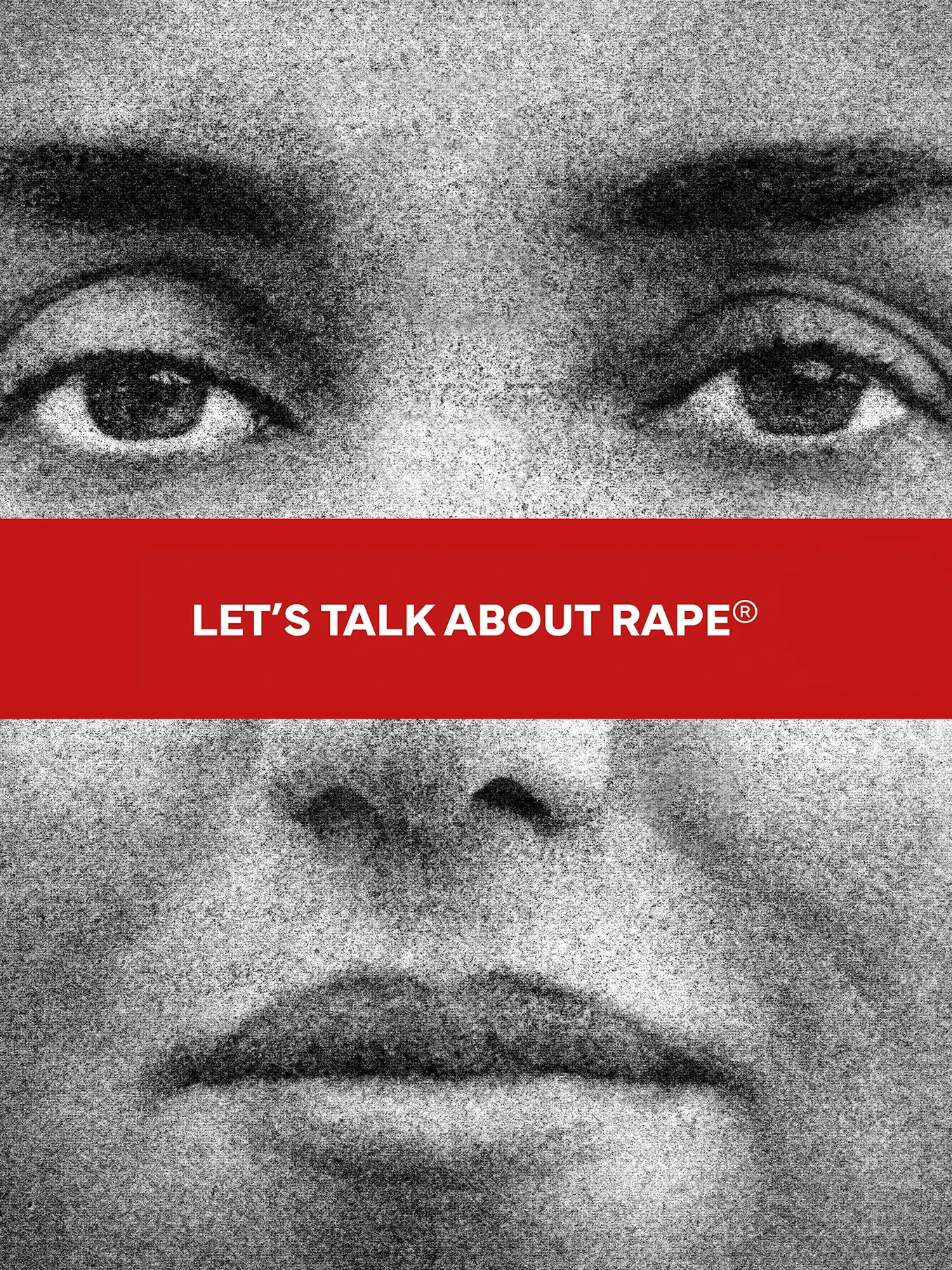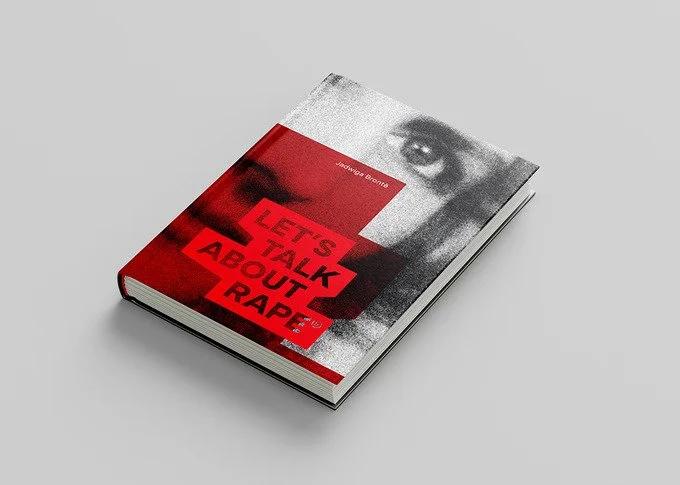Let’s Talk About Rape
Testimonies and portraits that confront
silence with strength
In a world where silence around sexual violence persists, a groundbreaking survivor-led project is refusing to look away.
Let’s Talk About Rape® is not just a book. It is a movement - one that confronts stigma head-on, restores agency to those who have lived through violence, and invites readers into a dialogue that society has too often avoided.
Through intimate photography and raw personal testimonies, survivors from across the world step forward to reclaim their voices. Each portrait is created in collaboration, each testimony written in the survivor’s own words, and every page speaks to a truth long suppressed: that survivors are not defined by what was done to them. They are defined by their resilience, dignity, and refusal to be silenced.
This feature takes a closer look at the vision, process, and impact of Let’s Talk About Rape®, exploring why this book matters, how it was made, and what it offers - not only to survivors, but to us all.
The premise of Let’s Talk About Rape® is deceptively simple yet profoundly radical: give survivors the space to speak and be seen, on their own terms. In a media landscape where stories of sexual violence are often mediated by journalists, academics, or institutions, this project flips the script. Survivors are not subjects; they are co-authors, co-creators, and decision-makers.
The project recognises that shame has long been weaponised against survivors. Across cultures and histories, silence has been demanded - in families, in communities, in courts. But here, silence is broken. Testimonies sit alongside striking portraits that capture not just pain but presence, identity, and survival.
As one participant, Ciara, a drug-rape survivor from Ireland, reflects:
“Through my painful experiences, I’ve found my purpose in life. What brings me meaning is realising my strengths and using them - and what was done to me - to make a positive difference in the lives of others.”
Her words exemplify the project’s philosophy: trauma acknowledged, but never the endpoint.
The Power of Photography as Healing
Photography is often seen as documentary - a way of capturing what is. But in this project, it becomes something more: a tool for therapy, healing, and empowerment.
Participants are not passive subjects; they collaborate in shaping their images, often taking part in the creative process themselves. Self-portraits, co-directed sessions, and long conversations ensure that the final image is not imposed from outside, but grows from within.
Shumu, a child sexual abuse and rape survivor from Bangladesh, described her experience of participating:
“When I was taking these self-portraits, I felt that for the first time, I was gaining back the agency over my body that my family and society had deprived me of for most of my life.”
For survivors whose bodies were sites of violation, reclaiming visibility through the lens can be transformative. The act of being photographed with care and consent becomes part of the healing journey.
Stories That Must Be Told
The book brings together stories from diverse contexts, yet a common thread runs through them all: the insistence that survivors must be heard.
From conflict-related rape in Rwanda and Kenya, to child sexual abuse in South Asia, to violence in European homes, these stories stretch across borders and generations. Together, they underline a truth that transcends geography: sexual violence is not an isolated problem, but a global one.
Consolee, a survivor of conflict-related rape during the 1994 genocide against the Tutsi in Rwanda, offers a stark reminder:
“The stories of survivors of sexual violence must be told - not only to fight against such monstrosities but also to help emancipate victims from the silence and suffering they endure.”
In her words lies the dual purpose of the project: testimony as resistance, and testimony as release.
At the heart of Let’s Talk About Rape® lies collaboration. This is not a traditional photo book where the photographer stands apart from the subject. Instead, every portrait emerges from trust, time, and mutual respect.
The process itself is therapeutic. Survivors speak of feeling seen, validated, and acknowledged in a way they had not been before. In safe, judgement-free spaces, they confront painful memories but also celebrate resilience.
Jacqueline, a conflict-related rape survivor from Kenya, described the act of participating not only as documentation, but as transformation. The project allowed her to step into a role not that of a victim, but of an agent - one who actively shapes how her story is told and remembered.
Through this process, photography becomes more than art. It becomes a vehicle for rewriting narratives: from invisibility to recognition, from victimhood to survival, from silence to strength.
Why This Book Matters
The importance of Let’s Talk About Rape® cannot be overstated. Sexual violence remains one of the most under-reported and under-prosecuted crimes worldwide. Survivors often carry their experiences in silence, weighed down by stigma, disbelief, or fear. This book offers a counterweight. It says, unequivocally: you are not alone. Your story matters. Your dignity remains intact.
It also speaks to wider society, challenging the myths and misconceptions that still surround sexual violence. By bringing survivors’ words and images to the forefront, it confronts audiences with realities that are too often hidden. It demands empathy, but also accountability.
Importantly, the project ensures that survivors benefit directly from the initiative. Unlike traditional publishing models, the proceeds from the book are returned to the participants themselves - acknowledging their authorship and reinforcing their ownership of their narratives.
This model challenges exploitative dynamics where survivors’ stories are used for institutional or commercial gain. Here, survivors are not commodities. They are partners.
Funding Justice, Not Silence
The campaign behind Let’s Talk About Rape® is itself a statement of values. Instead of relying on corporate publishers, the team has turned to crowdfunding. Backers can pledge whatever amount they feel able to, or simply pre-order a copy of the book.
If the funding target is reached, the book will be printed and distributed; if not, no one will be charged. It is a democratic model that relies on collective support rather than profit motives.
In doing so, the project places trust in the community- readers, allies, and fellow survivors - to bring it to life.
Shifting the Narrative
The title itself, Let’s Talk About Rape®, is deliberately provocative. It insists on addressing what society often avoids. It calls for open dialogue where silence has reigned.
For too long, sexual violence has been surrounded by stigma, shame, and euphemism. This project refuses to look away. It creates a visual and textual language that insists: rape must be named, confronted, and remembered - not hidden.
By shifting the narrative, the book also models what a survivor-centred approach can look like. It suggests new ways of engaging with trauma - ways that prioritise dignity, consent, and empowerment.
Although rooted in personal testimonies, the project also contributes to a broader, global conversation. It sits within a growing movement of survivor-led activism, from the #MeToo wave to grassroots organisations challenging sexual violence in conflict zones.
What distinguishes Let’s Talk About Rape® is its fusion of art and activism. It is both aesthetically powerful and politically urgent. It invites readers not just to witness, but to reflect and act.
The diversity of voices included also ensures that this is not a single-story narrative. It recognises that sexual violence takes many forms, intersects with many identities, and requires many responses.
Where Do We Go From Here?
The release of Let’s Talk About Rape® is not the end point, but a beginning. Its pages are an invitation: to listen, to learn, and to support.
For survivors, it may offer solidarity - a reminder that they are not alone, that others have walked similar paths and found ways to heal. For allies, it offers insight into the lived realities of sexual violence, urging greater compassion and action. For policymakers, institutions, and communities, it provides a challenge: to confront the structures that enable silence and stigma to persist. Ultimately, the project asks a simple but profound question: what happens when we stop looking away?
Let’s Talk About Rape® is not an easy book. Its stories are painful, its images raw. But that is precisely why it matters. To turn away from survivors is to perpetuate silence. To engage with their testimonies is to honour their resilience and join their call for change.
In amplifying survivor voices, the project shifts the narrative from secrecy to visibility, from stigma to strength. It is both a record of trauma and a testament to survival. As readers, we are invited not only to witness but to stand alongside those who have spoken. Supporting this work is more than backing a book - it is joining a movement to ensure that survivors are seen, heard, and believed.
Together, we can change the narrative. Together, we can make sure silence is no longer the default.


